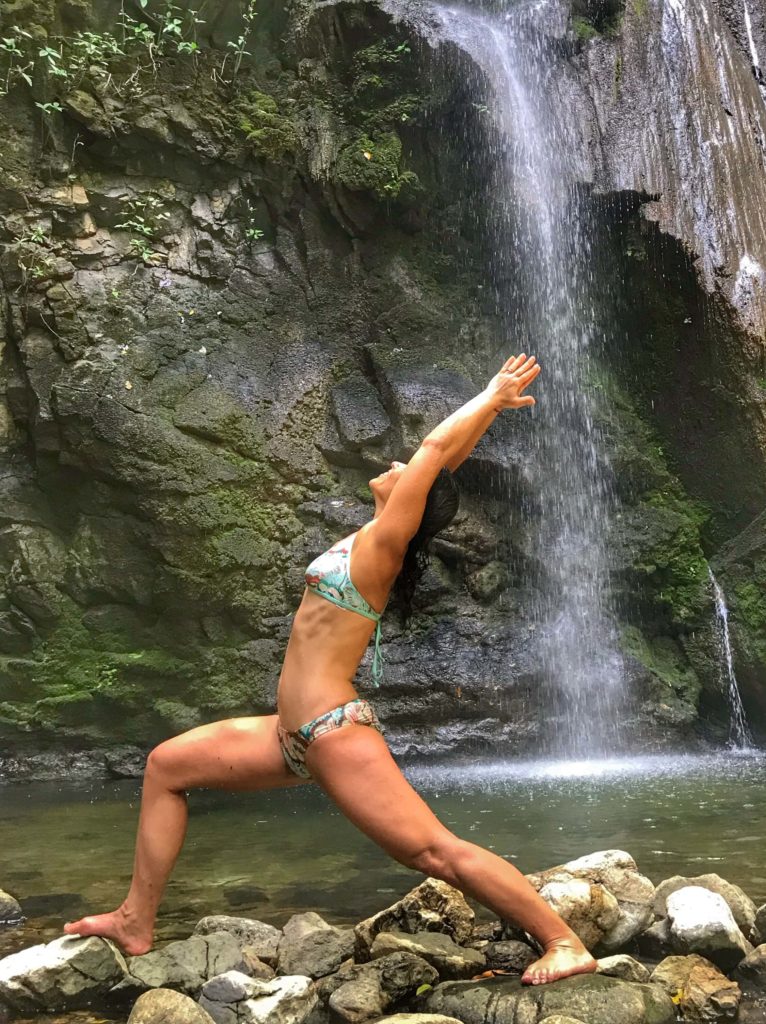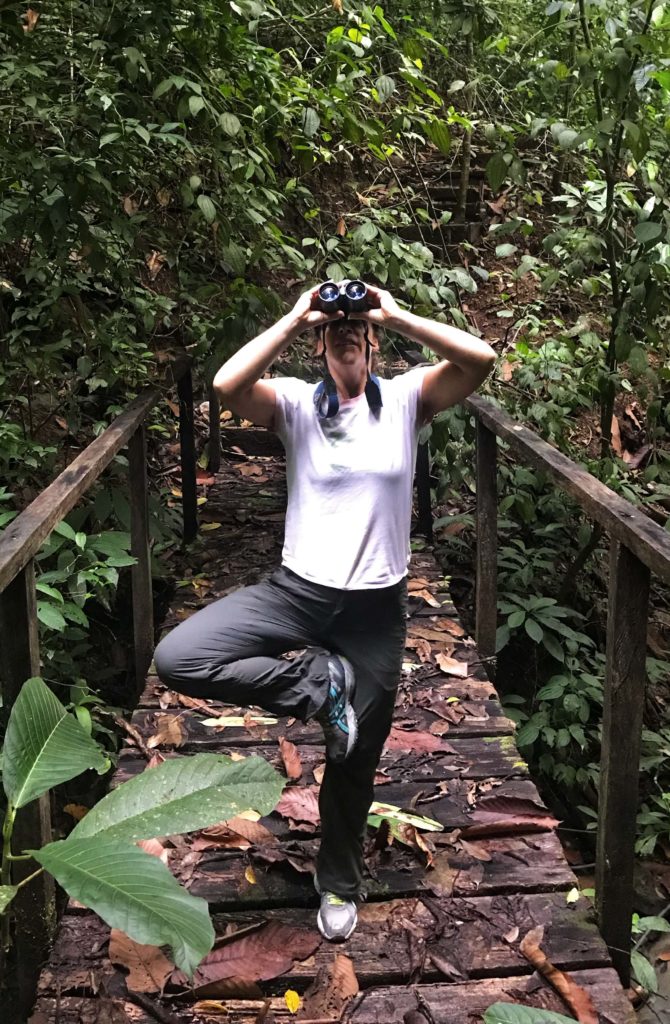Soak up life to lift yourself up.
Explore each experience as asana.
The purpose of the world around us is to give us the opportunity to react. What we do is our ‘pose’.
Sutra 2.21 says, “Everything that exists is for the sake of the soul that perceived it.” – Roy Eugene Davis
As we embark on this month’s sutra selection, it is helpful to recall the well-known idea mentioned in sutra 4.17, “The mind perceives objects or not, depending on the attraction they exert and the interest it has in them.” All people notice and react to different things given the same circumstances. Eye witnesses will recall the same event differently. Whatever we notice and react to is meant especially for us as our own mental postures to be practiced with the same patience and intelligence that we practice our physical asanas. All the trials, tribulations, joys, celebrations, and all our mind chatter, are mental ‘poses’ just like the asana we practice on the mat. We have excitementasana, funasana, angerasana, sadnessasana, and the entire gamut of situations, thought, emotion, and reaction in which to practice. The ‘mat’ is infinite and designed specifically for each of us.
Sutra 2.21 is yoga’s answer to why there is suffering, or more accurately, the perception of suffering and the perception of pleasure.
One of the gifts of physical yoga practice is that we start where our body is and build strength, awareness, and flexibility. We release here, we learn to support there, and we learn how to breathe in the pose. It’s a gradual process that perpetually improves. A pose that was once very simple becomes complex, and a pose that was once agonizing becomes surprisingly peaceful. It is the practice that has value, not an end pose. Each pose can endlessly evolve into more subtlety and space.
Sutra 2.21 applies the same principles to everything we see and experience in our world. Life experiences are the ‘postures’ to help our minds become more pliable and stable, quiet and present. The value lies in the experience itself, not in whether it is a good experience or a bad experience. The same experience is different for different individuals. We don’t only practice poses that are easy for us and feel good, we also practice poses that are hard for us and sometimes we even specifically choose poses to address tight or weak areas. We practice for the sake of practicing. We see life through our perception, including both suffering and pleasure, to help us become more balanced, stable, playful people. The type of experience is irrelevant. Once our mind is stable, we are not affected by the world around us (Sutra 2.20).
So soak up life to lift yourself up. Explore each experience as an asana.
When we feel resistance or instability in a situation, we can explore how to find more mental space here, more mental stability there, and more connection with our breath. In the physical posture, when we hit resistance or instability we look to alignment and integration to find a fuller expression of the pose.
Our attitude is our alignment.
A bad attitude and a good attitude go a long way. If we can remember that our perception of the experience is a gift and a ‘posture’ to practice then we can approach each situation, whether pleasurable or challenging, from just where we are. It doesn’t matter if we nail the ‘pose’ and have reached a state of constant peace. We are practicing. There will always be more subtlety and space. We can approach each experience with an open heart because, just like yoga poses we don’t like, we know that they are good for our overall wellbeing. We remember that our practice helps us contribute to the greater good.
Collecting our resources to stabilize the mind is integration.
If we think of life experiences as nothing more than asanas, we can look at the source of tightness in our bodies like the source of suffering in our minds; from lack of use, overuse, or perpetual unbalancing habits. In physical asana practice we integrate the body with cues and actions while in the mental practice we use mental tools. Just like in the physical practice, a beginning yogi knows fewer cues and actions than an intermediate student. We collect our resources to choose tools to ease the areas of friction and to stabilize the mind. Tools to calm the mind may include breath techniques, songs, mantra, affirmations, loving kindness meditation, ho’oponopono meditation, drishti, gratitude practices, visualizations, and physical movements. The list of tools grows and expands as we practice. A benefit of every situation is that what we perceive gives us new tools or new awareness. We begin to watch our reaction to the world around us and notice where the kinks and resistance are. We can use what tools we currently have to soothe unneeded tension and experience the world around us completely. After all, according to B.K.S. Iyengar, “Nature and intelligence exist solely to serve the seer’s true purpose, emancipation.”
What we do is our ‘pose’.
Our action is what we put out into the world. What we do or say, or don’t do or don’t say, is the final ‘pose’. The purpose of the world around us is to give us the opportunity to react. What we do is our opportunity to move towards peace, our natural state. All of our perceptions of the world are to help move us in that direction. Do we meet fear with anger or love? Do we meet joy with envy or equanimity? Do we yell back or breathe and listen? When we align attitude and integrate our skills into our mental state, then we move towards yoga in our actions and reactions to the world around us.
Remember that the entire world, thoughts, and emotions are meant to help us move towards liberation, not just the ones we struggle through. It’s easy to reach out for props and tools when we are suffering, but we can also make our ‘good’ poses better and find more space, ease, stability, and connection. We can also make our life ‘positive’ experiences such as joy and happiness more effective by being aware of them, honoring the present moment, and expressing gratitude for them. Every time we practice our mental yoga it helps us sharpen our tools to use when we are suffering. It is easier to learn how to use tools when we’re not struggling.
To learn to find strength and space in the pose, we use straps and blocks, we break down poses into different parts and practice specific actions in our body, we practice breath patterns, and we learn how to safely warm up and cool down from peak poses. Sutra 2.21 reminds us to approach life with the same conditioning, being happy exploring where we are and moving intelligently and patiently in the direction of our ‘final’ pose, actions that move us towards peace. The world around us is the ‘pose’ and life is the practice. We keep coming back to the mat and doing the same poses over and over again finding more stability, space, and peace. Enjoy the practice of life like our physical yoga practice. Savor life’s diversity like we look forward to yoga classes and the challenges and enlightenment we find in them.
The whole play of life is a mat to practice on. The practice we individually experience is designed specifically for each of us.


